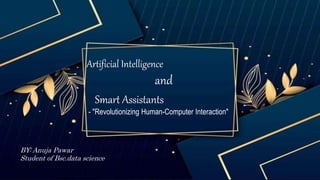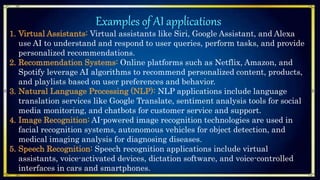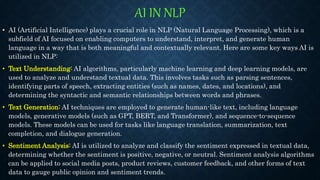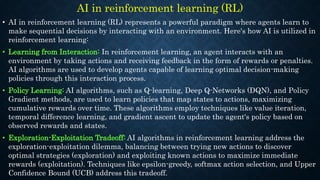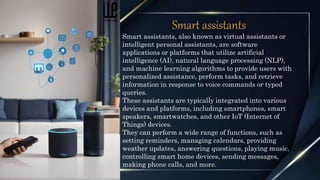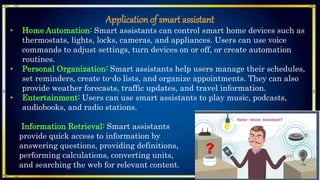This document discusses artificial intelligence and smart assistants. It begins with an introduction to AI, describing it as simulating human intelligence through machine learning, reasoning, and interacting with environments. It then covers various AI applications like machine learning, neural networks, natural language processing, and reinforcement learning. The document also discusses smart assistants, which use AI to respond to voice commands and queries. Popular examples of smart assistants are described, like Siri, Google Assistant, and Alexa. In conclusion, smart assistants are transforming human-computer interaction through conversational interfaces that can perform tasks and answer questions.
